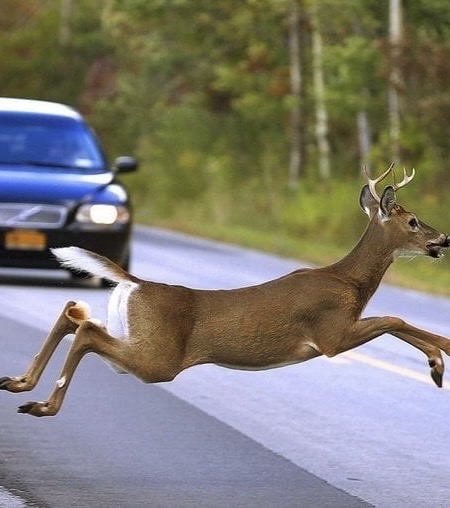Have you ever stumbled upon a puzzle that seems deceptively simple at first glance but ends up boggling your mind? The image above asks a simple question: “Can you find the black dot?” At first, it seems straightforward—after all, it’s just a grid of white dots connected by intersecting lines. But as you stare at the image, you may find yourself second-guessing what you see.
Common Mistakes: Why Finding the Black Dot Is Tricky

Many people who attempt to solve this puzzle report wildly different answers. Some are convinced they’ve spotted a black dot or even multiple dots, while others insist there are none. So why does this happen?
- The Nature of Optical Illusions
This puzzle leverages a phenomenon called the Hermann Grid Illusion. At the intersections of the white lines, some viewers perceive black dots that seem to “blink” in and out of existence as their eyes move. These phantom dots aren’t actually present; they’re an optical illusion caused by the way our eyes and brain process contrast and brightness. - Human Vision Limitations
Our eyes are excellent tools, but they have limitations. When observing this grid, the retina’s ganglion cells process light and dark areas differently. This processing often leads to the perception of small black dots at intersections, which disappear when you focus directly on them. - Attention and Movement
Another mistake is assuming the black dots are stationary. In reality, they seem to move or shift as you try to lock your focus. This creates the illusion that you’re “chasing” the dots, making the puzzle even more frustrating. - Overthinking the Problem
Many people spend so much time trying to find hidden patterns or complex solutions that they miss the key point of the illusion—it’s not about finding the dots, but understanding why they appear in the first place.
Does this sound familiar? Don’t worry. Now that we know why the black dot seems so elusive, let’s dive into solving the puzzle step by step.
Step-by-Step Guide to Understanding the Puzzle
Let’s break this illusion down so you can fully grasp what’s happening and why it’s so perplexing.
Step 1: Take a Moment to Observe
Start by staring at the image calmly. Avoid darting your eyes from intersection to intersection. At first, you may feel confident that you see black dots appearing in some places, only for them to vanish when you look directly at those spots.
Step 2: Focus on a Single Intersection
Try fixing your gaze on a single point where the white lines cross. Do you notice how the black dot disappears when you focus directly on it? This is because your central vision is sharp enough to override the illusion, but your peripheral vision is still affected by the contrast between the white dots and the black background.
Step 3: Move Your Eyes Slowly
Now, let your eyes wander slowly across the grid. You might see the black dots appear briefly as your focus shifts. This happens because the illusion relies on your brain filling in details from your peripheral vision, where light and dark contrasts can create misleading signals.
Step 4: Understand the Science
The illusion works due to something called lateral inhibition, a process where the retina’s light-sensitive cells suppress the activity of neighboring cells. This enhances contrast and edges, making the grid lines and dots seem sharper. However, this same process tricks your brain into “seeing” black dots at intersections where there’s actually nothing.
Step 5: Accept the Truth

Here’s the answer: there are no black dots. The illusion creates the appearance of them, but if you study the image closely, you’ll realize that all the dots are white. The black dots are just a figment of your perception, designed to trick your eyes and brain into seeing what isn’t there.
Share Your Thoughts: What Did You See?
Now that you understand the puzzle, we’d love to hear from you. Did you see the black dots? How long did it take you to figure out the illusion? Share your experience in the comments below! Everyone’s perception is unique, and it’s always fascinating to compare notes with others.
Don’t forget to share this puzzle with your friends and family. See if they can solve it, or better yet, challenge them to explain how the illusion works. It’s a great way to spark conversation and test everyone’s visual perception.
Conclusion: Keep Your Mind Sharp with More Puzzles
Optical illusions like this one aren’t just entertaining—they also help us better understand how our brains process visual information. By exploring puzzles like these, we can sharpen our observation skills, enhance our logical thinking, and even learn a little more about the quirks of human perception.
So, can you find the black dot? The answer, as we’ve seen, is both simple and profound: there isn’t one. But the process of discovering this answer teaches us to approach challenges with curiosity and an open mind.
If you enjoyed this puzzle, why not try more? There’s a world of illusions, riddles, and logic games out there waiting to challenge your brain. Happy puzzling!
Kind Lady Saves a Baby Deer Sleeping Under a Tire By Leaving Note

In our region of the United States, it is wise to regularly inspect the area around and beneath your car to ensure that wildlife hasn’t made it into a home. When a good-hearted woman saw a baby deer dozing beneath someone else’s automobile tire, she made the decision to intervene.
A woman wanted to make sure the car’s driver was aware that a baby deer was sleeping beneath a tire, so she shared this Facebook post, which quickly gained popularity.

The responses were heartfelt and occasionally humorous. Joshua Kevin Nye’s comment is the most well-liked one thus far:
You know it was an elderly woman, but how? Why, if you saw her, didn’t she just write a message instead of telling you there was a blasted deer under the tire? I’m looking for clarification!
Another comedian expressed their hope that the motorist was literate. I suppose you can’t always get that conclusion from the way some people drive.
Cyntha Atkinson was among the kinder individuals who valued this woman’s action:

Thank you for leaving the note, kind woman.
Thank you, Cyntha. One has to admire the heart of those who, rather than choosing to carry on with their lives as usual, choose to make a difference.
Would you have continued living your life, left a note, or attempted to get the deer to come out from under the car?



Leave a Reply